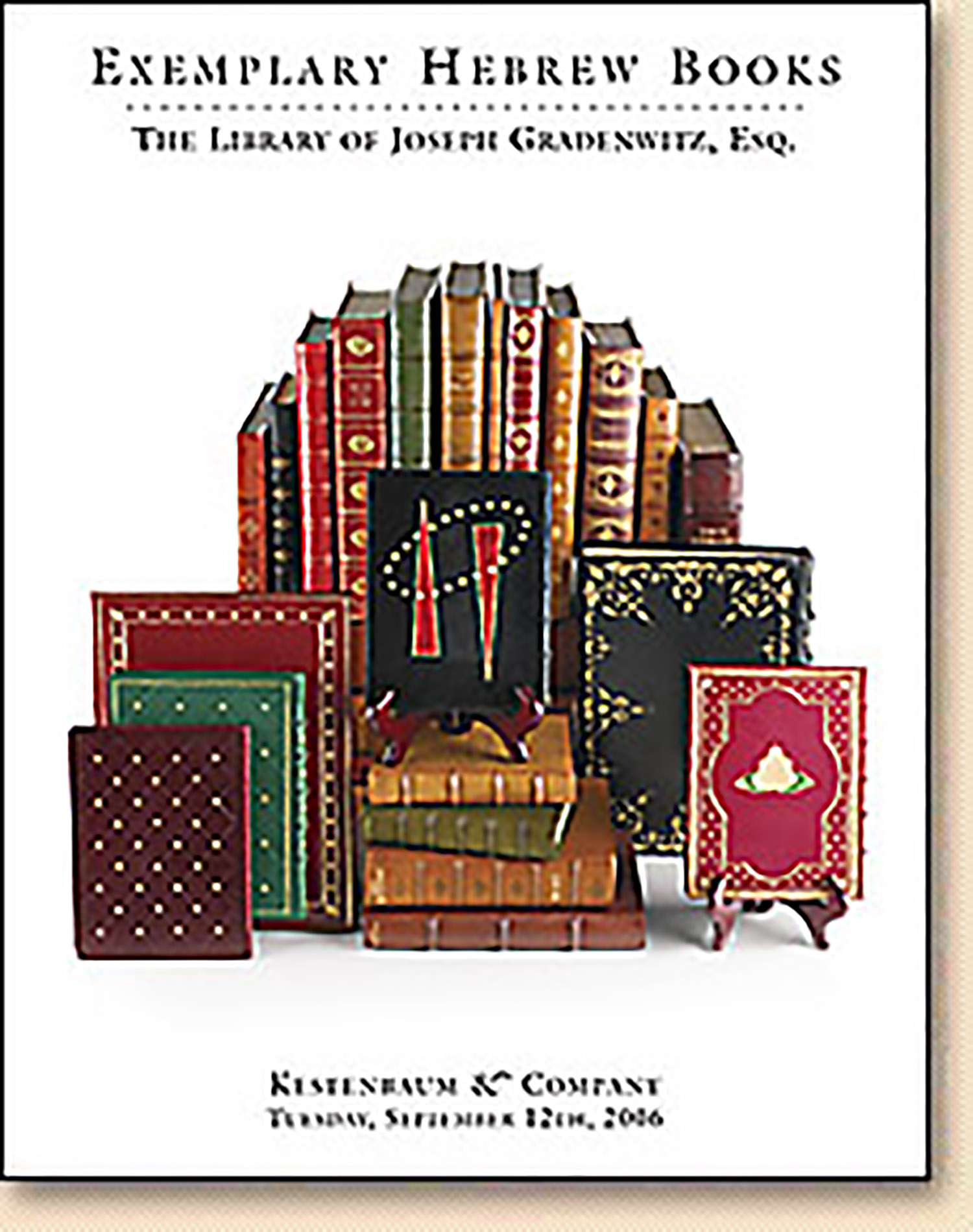[Rabbinic law]. Anonymous

AUCTION 34 |
Tuesday, September 12th,
2006 at 1:00
Exemplary Hebrew Books: The Library of Joseph Gradenwitz, Esq.
Lot 99
KOL BO
[Rabbinic law]. Anonymous
Rimini: Gershom Soncino (1525)
Est: $10,000 - $15,000
PRICE REALIZED $9,000
As its name Kol Bo ["All Therein"] indicates, this work is a cornucopia, or rather, a compendium of law and lore. Written at the end of the 13th or beginning of the 14th century, the Kol Bo contains some 150 sections pertaining to blessings, prayer, the synagogue, Sabbath, holidays, marriage, monetary matters, forbidden foods, mourning, etc. Included is one of the earliest commentaries to the text of the Passover Hagadah.
Scholars still debate the connection of the anonymous Kol Bo, to Aaron Hakohen of Lunel's “Orchoth Chaim,” whose contents overlap the material presented here. It is possible that the Kol Bo is by the same author - but perhaps, an earlier draft of the Orchoth Chaim. The Kol Bo draws upon the works of many halachic authorities, including R. Eliezer b. Nathan, R. Peretz of Corbeil, and R. Baruch b. Isaac. Thus, it presents a distillation of Franco-German and Provencal practice.
Due to the pernicious activity of the Dominican Church, the printer, Gershom Soncino had been forced to leave the city of Pesaro. The Elders of the city of Rimini offered him hospitality and enabled him to resume printing there. In gratitude, Soncino adopted as his printer’s mark the Tower of Rimini, flanking it with a Hebrew motto from Proverbs: ‘“A Tower of Strength is the Lord - into it, Shall Run the Righteous and be Saved.” Thus was born the first Hebrew printer’s mark in Italy. See D. Amram, The Makers of Hebrew Books in Italy (1963) p.130
